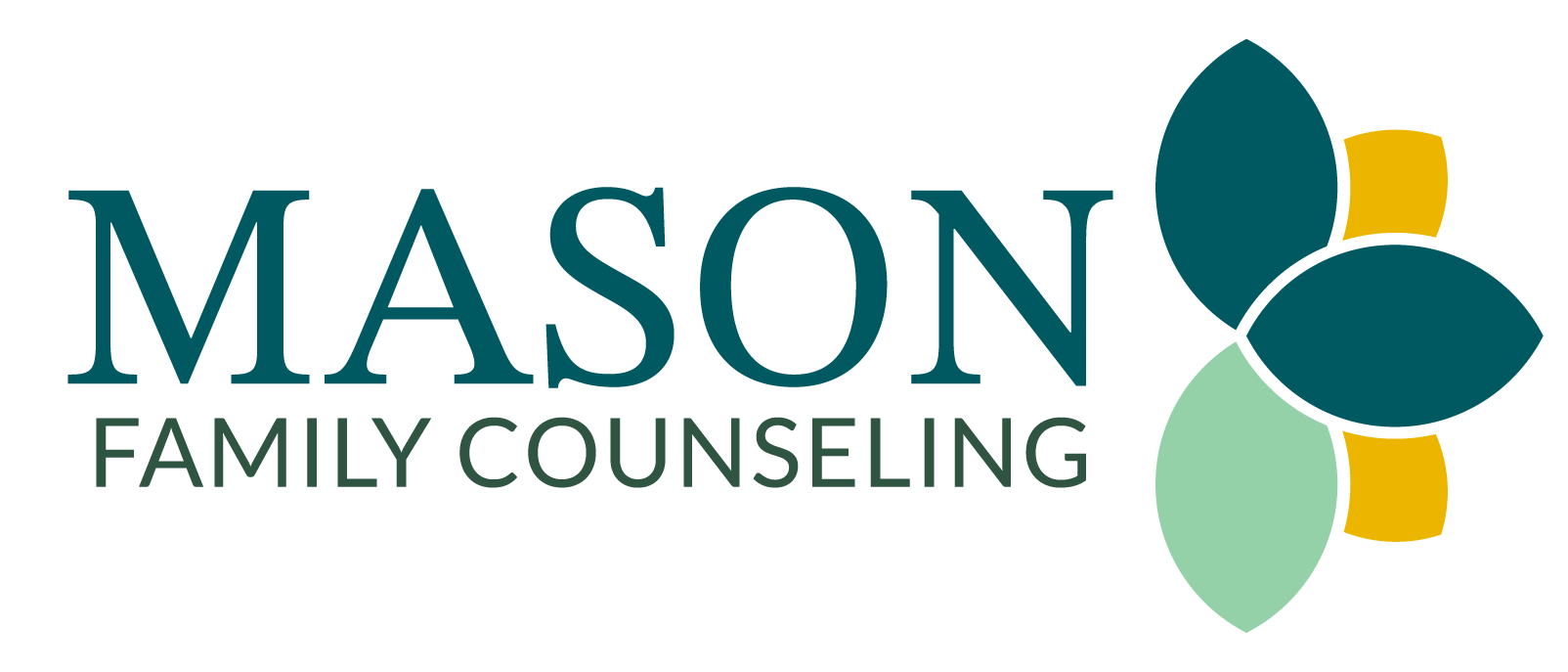The intersection of mental health disorders and substance use creates one of the most challenging yet ultimately treatable conditions in behavioral health care. At Mason Family Counseling, serving the greater Cincinnati area for over a decade, we’ve witnessed the profound transformation that occurs when individuals receive integrated treatment for both conditions simultaneously, rather than addressing them as separate, unrelated problems that require different providers and treatment approaches.
Dual diagnosis, also known as co-occurring disorders, affects approximately half of all people with substance use disorders, making this combination far more common than many people realize. This high correlation isn’t coincidental or merely statistical; mental health conditions and substance use disorders share common risk factors, often develop simultaneously during vulnerable periods, and significantly influence each other’s progression, severity, and treatment outcomes.
Understanding this intricate relationship proves crucial for effective treatment and lasting recovery. When only one condition receives attention while the other remains untreated, individuals typically experience higher relapse rates, more frequent hospitalizations, increased legal and financial problems, and significantly poorer overall quality of life. However, when both conditions are treated together through an integrated, comprehensive approach, recovery outcomes improve dramatically, and individuals develop the skills, insights, and resilience needed for sustained wellness and meaningful life satisfaction.
The Science Behind Co-Occurring Disorders
Both mental health disorders and substance use disorders affect similar brain regions and neurotransmitter systems, creating overlapping symptoms and treatment challenges that require specialized expertise. The brain’s reward system, which involves dopamine pathways that govern motivation, pleasure, and goal-directed behavior, becomes disrupted in both conditions. Substances artificially stimulate these pathways in ways that can worsen underlying mental health conditions, while mental health disorders often involve dysregulation in these same systems that makes individuals more vulnerable to substance use as a form of self-medication.
Chronic substance use fundamentally alters brain chemistry in ways that exacerbate underlying mental health conditions while creating new symptoms that can persist long after substance use ends. The brain’s natural ability to produce pleasure, motivation, and emotional regulation becomes compromised, requiring time and appropriate treatment to restore healthy functioning.
Stress response systems throughout the body, including the hypothalamic-pituitary-adrenal axis that governs how we respond to threats and challenges, become dysregulated in both mental health and substance use disorders. Chronic stress from untreated mental health conditions increases vulnerability to substance use as individuals seek relief from overwhelming emotions and physical symptoms. Simultaneously, substance use disrupts the body’s natural stress management systems, creating additional stress that can trigger or worsen mental health symptoms. This creates a destructive cycle where each condition feeds into and worsens the other.
Common risk factors help explain why these conditions so frequently co-occur and why integrated treatment approaches are essential for success. Genetic predisposition plays a significant role, as family history of either mental health or substance use disorders increases risk for both conditions. Genetic variations affecting neurotransmitter function contribute to both types of disorders, while inherited traits like impulsivity, emotional sensitivity, or difficulty with stress management increase vulnerability to both mental health and substance use problems.
Environmental influences create additional risk factors that affect both conditions simultaneously. Childhood trauma significantly increases risk for both mental health and substance use disorders, while chronic stress, poverty, and social instability contribute to the development of both types of problems. Peer influences and social environment affect both mental health and substance use patterns, while cultural attitudes toward mental health and substance use impact help-seeking behavior and treatment engagement.
Developmental factors also contribute to the high correlation between these conditions. The adolescent brain’s ongoing development makes teenagers particularly vulnerable to both mental health and substance use disorders, while early onset of either condition significantly increases the likelihood of developing the other. Developmental trauma affects brain development in ways that increase risk for both types of problems, and educational or social disruptions during crucial developmental periods can contribute to both mental health and substance use difficulties.
Common Co-Occurring Disorder Combinations
Depression and alcohol use disorder represent one of the most frequently encountered dual diagnosis combinations, with each condition significantly worsening the other in ways that require specialized treatment approaches. Depression often leads to alcohol use as individuals seek temporary relief from feelings of hopelessness, sadness, and emotional numbness. Social isolation that commonly accompanies depression can lead to drinking alone, while sleep problems associated with depression may result in using alcohol as a sleep aid. The lack of motivation and pleasure that characterizes depression makes alcohol’s mood-altering effects particularly appealing as a temporary escape from emotional pain.
However, alcohol use consistently worsens depression over time because alcohol functions as a central nervous system depressant that further dampens mood and emotional regulation. Alcohol significantly disrupts sleep patterns, actually worsening the sleep problems that individuals were trying to solve. The social, legal, and financial problems that often result from problematic alcohol use create additional stressors that deepen depression, while alcohol interferes with the effectiveness of antidepressant medications and therapeutic interventions.
Anxiety disorders and benzodiazepine dependence often begin with legitimate medical treatment that gradually evolves into physical dependence and problematic use patterns. This combination frequently starts when individuals receive appropriate prescriptions for anxiety disorders, but tolerance develops over weeks or months of regular use, requiring higher doses to achieve the same anxiety relief. Physical dependence can develop within a relatively short time frame, and withdrawal symptoms include severe anxiety that creates a powerful motivation to continue use.
This pattern becomes particularly challenging because alternative anxiety treatments may be avoided due to fear of withdrawal symptoms, while the original anxiety disorder remains undertreated beneath the medication dependence. Withdrawal from benzodiazepines can be medically dangerous and requires careful supervision, while anxiety symptoms often worsen during the withdrawal process, requiring alternative treatment approaches that individuals may not have learned to use effectively.
Trauma and PTSD frequently co-occur with various substances as individuals attempt to manage overwhelming emotional and physical symptoms that result from traumatic experiences. Self-medication patterns often involve alcohol or depressants to numb emotional pain and reduce hypervigilance, stimulants to counteract depression and emotional numbness that can follow trauma, cannabis to manage sleep problems and general anxiety, or prescription opioids that may have been initially prescribed for trauma-related physical injuries.
The complexity of treating trauma-related dual diagnosis requires careful attention to safety and stabilization before addressing the trauma itself, as trauma treatment may initially increase substance use as painful memories and emotions surface during therapy. Substance use often masks trauma symptoms, making accurate diagnosis difficult, while safety and stabilization must be achieved before trauma processing work can begin effectively. Both conditions significantly affect family and relationship dynamics, requiring comprehensive treatment that addresses the entire support system.
The Integrated Care Model at Mason Family Counseling
Our comprehensive approach to dual diagnosis treatment begins with a thorough assessment that examines both conditions simultaneously rather than treating them as separate problems requiring different providers. This evaluation includes a complete substance use history examining patterns, triggers, consequences, and previous treatment attempts, comprehensive mental health assessment including family history and prior therapeutic interventions, medical evaluation to assess physical health impacts and medication needs, psychosocial assessment examining how both conditions affect relationships, work or school performance, legal status, and financial stability, and risk assessment for safety concerns including suicide risk, medical complications, and potential for dangerous behaviors.
Understanding the timeline and relationship between mental health symptoms and substance use patterns proves crucial for developing effective treatment plans. We work to determine which condition appeared first and how the other developed over time, examine how mental health symptoms change during periods of substance use versus abstinence, identify triggers that affect both conditions and how they interact with each other, and evaluate how previous treatment attempts addressed one or both conditions and what approaches were most or least effective.
Our coordinated treatment team includes licensed clinical staff with specialized training in dual diagnosis treatment, including licensed social workers with expertise in both addiction and mental health specializations, licensed counselors trained in individual and group therapy approaches for co-occurring disorders, psychologists with specific expertise in dual diagnosis assessment and treatment, and case managers who coordinate care across multiple service providers and help navigate complex treatment systems.
Rather than developing separate treatment plans for each condition, we create unified approaches that address both simultaneously. This integrated planning includes single treatment plans that address both conditions as interconnected rather than separate problems, coordinated goals that recognize how progress in one area affects the other, integrated session planning that doesn’t artificially separate mental health and substance use issues, and unified crisis planning that addresses both mental health emergencies and substance use relapse situations.
Evidence-Based Treatment Approaches
Cognitive Behavioral Therapy adapted specifically for individuals with co-occurring disorders helps clients understand and change the thought patterns that trigger both substance use and mental health symptoms. This specialized approach focuses on identifying thoughts that trigger both substance use and mental health symptoms, recognizing cognitive distortions that maintain both conditions, developing practical coping strategies for managing symptoms of both conditions simultaneously, and gradually facing situations that trigger both substance use urges and mental health symptoms in safe, controlled ways that build confidence and coping skills.
The skill development component includes coping strategies that address both mental health symptoms and substance use triggers simultaneously, problem-solving techniques for the complex situations that individuals with dual diagnosis often face, communication skills for discussing both conditions with family members, healthcare providers, and support systems, and relapse prevention planning that integrates both conditions rather than treating them separately.
Dialectical Behavior Therapy proves particularly effective for dual diagnosis treatment because it addresses emotional regulation difficulties that underlie both substance use and many mental health conditions. The four core DBT skills modules provide comprehensive tools for managing both conditions: mindfulness skills help individuals stay present during cravings and emotional distress without automatically responding with substance use or unhealthy behaviors; emotional regulation techniques teach management of intense emotions without resorting to substances or self-destructive behaviors; distress tolerance skills provide ways to survive crisis situations without making them worse through substance use or impulsive actions; and interpersonal effectiveness skills help maintain relationships while managing both conditions and advocating for appropriate support and treatment.
Trauma-informed care recognizes the high correlation between trauma and dual diagnosis, ensuring that all treatment approaches account for potential trauma history and its ongoing effects. This includes ensuring physical and emotional safety throughout treatment before processing traumatic experiences, stabilizing both mental health symptoms and substance use before engaging in trauma processing work, building comprehensive coping skills that can handle trauma processing without triggering relapse, creating therapeutic relationships that feel safe and trustworthy rather than retraumatizing, and using specialized trauma therapies like EMDR adapted for individuals with substance use histories.

The Treatment Process: Phases of Recovery
The first phase of treatment focuses on stabilization and comprehensive assessment, typically lasting four to eight weeks depending on the severity of both conditions. Immediate safety considerations include medical evaluation and supervised detoxification when needed, psychiatric assessment and medication stabilization for mental health conditions, crisis planning for both mental health emergencies and substance use relapse situations, and establishment of therapeutic relationships and treatment engagement.
Initial skill building during this phase includes basic coping strategies for managing cravings and mental health symptoms when they occur, psychoeducation about the relationship between both conditions and how they affect each other, introduction to support systems and recovery resources in the community, and development of daily structure and routine that supports both mental health and sobriety.
The second phase involves active treatment and intensive skill development, typically lasting four to eight months depending on individual progress and needs. This phase includes intensive individual therapy sessions addressing both conditions simultaneously, group therapy with other individuals facing similar dual diagnosis challenges, family therapy to address how both conditions have affected relationships and to build family support for recovery, and ongoing medication management and adjustment as needed.
Advanced skill development during this phase focuses on comprehensive coping strategies for complex real-world situations that involve both conditions, practice with actual triggers and stressors in gradually increasing intensity, development of healthy relationships and meaningful activities that support both mental health and sobriety, building employment, educational, or vocational skills that support long-term stability, and developing independence in managing both conditions with appropriate support.
The third phase emphasizes maintenance and relapse prevention, typically beginning around six months and continuing as long as beneficial for sustained recovery. This phase includes advanced relapse prevention planning that addresses both conditions and their interaction, development of meaningful life goals and activities that provide purpose and satisfaction, building long-term support systems that understand both conditions, preparation for graduation from intensive treatment while maintaining appropriate ongoing support, and development of plans for handling future stressors, life transitions, and potential challenges to recovery.
Family Involvement and Support Systems
Dual diagnosis significantly affects entire family systems, often in complex ways that require education, support, and sometimes healing for family relationships damaged by both conditions. Common family dynamics include confusion about which behaviors result from mental health issues versus substance use, enabling behaviors that inadvertently support both conditions, family members developing their own mental health or substance use problems in response to chronic stress, relationship damage from years of untreated dual diagnosis, and financial and legal consequences that affect the entire family’s stability and wellbeing.
Family education components help family members understand both conditions and their relationship to each other. This includes education about mental health disorders, their symptoms, and how they interact with substance use, understanding addiction as a brain disease rather than a moral failing or character weakness, learning about how both conditions interact and influence each other’s progression, recognizing signs of relapse for both mental health and substance use conditions, and understanding the recovery process and what to expect during different phases of treatment.
Communication skills training helps families learn to discuss both conditions without judgment or blame, set appropriate boundaries that support recovery without enabling continued problems, express concern and support effectively without taking responsibility for the individual’s recovery, and avoid common communication patterns that worsen both conditions or trigger relapse.
Supporting recovery without enabling requires understanding the crucial difference between help and enabling behavior, learning when to provide support versus when to allow natural consequences, developing family members’ own support systems and coping strategies, participating actively in family therapy and support groups, and maintaining hope and connection while protecting their own mental health and wellbeing.
Long-Term Recovery and Meaningful Life Building
Successful dual diagnosis recovery involves much more than simply stopping substance use and managing mental health symptoms. It requires building a meaningful, satisfying life that doesn’t require substances to cope with mental health challenges or life stressors. This process involves rediscovering identity beyond both conditions, exploring interests and values that may have been suppressed during active addiction and mental health struggles, developing new hobbies and activities that support both mental health and sobriety, building relationships based on authentic connection rather than shared substance use, and creating life goals that provide purpose and direction.
Vocational and educational goals often require attention because both conditions frequently affect work or school performance over time. This includes addressing how both conditions may have impacted career or educational progress, developing skills for managing both conditions in work or school environments, building realistic career goals that support overall wellness and recovery, addressing legal or financial consequences that may limit opportunities, and creating plans for continued growth and advancement that account for ongoing recovery needs.
Relationship repair and development represent crucial components of long-term recovery success. This involves making appropriate amends for damage caused by both conditions, learning to communicate about both conditions in relationships without shame or secrecy, developing new, healthy relationships that support recovery and personal growth, setting appropriate boundaries with people who don’t support recovery efforts, and building intimate relationships that can handle the ongoing management of both conditions.
At Mason Family Counseling, we understand that reaching out for dual diagnosis treatment can feel overwhelming, especially when you’re already struggling with both mental health and substance use challenges. Our experienced staff provides non-judgmental, compassionate conversations about your current situation, assessment of immediate safety and medical needs, clear explanation of our integrated treatment approach and what to expect, discussion of practical concerns like insurance coverage, scheduling, and logistics, and connection with appropriate level of care and specialized staff who understand the complexity of dual diagnosis.
Understanding that dual diagnosis situations often involve crisis or urgent need for intervention, we prioritize rapid access to care through same-week appointments for new clients when possible, crisis intervention services for urgent situations requiring immediate attention, coordination with medical detox facilities when medically supervised withdrawal is needed, emergency psychiatric evaluation if safety concerns exist, and immediate support and stabilization while comprehensive treatment plans are developed.
Dual diagnosis treatment represents hope for individuals who may have previously felt that their situation was hopeless or too complex for effective intervention. At Mason Family Counseling, we’ve witnessed remarkable transformations when individuals receive comprehensive, integrated care that addresses both mental health and substance use simultaneously rather than treating them as separate, unrelated problems.
Recovery from dual diagnosis involves building a life that’s so meaningful, connected, and fulfilling that substances are no longer needed to cope with mental health challenges or life stressors. With proper integrated treatment, professional support, and commitment to the recovery process, individuals not only achieve sobriety and mental health stability but often develop insights, coping skills, and resilience that serve them well throughout their lives. The journey may feel daunting initially, but with integrated treatment, comprehensive support, and evidence-based interventions, recovery from dual diagnosis is not only possible but highly probable.
Your story doesn’t end with these diagnoses. With proper treatment, it can become a story of recovery, resilience, personal growth, and renewed hope for a future filled with meaning, connection, and genuine life satisfaction.

